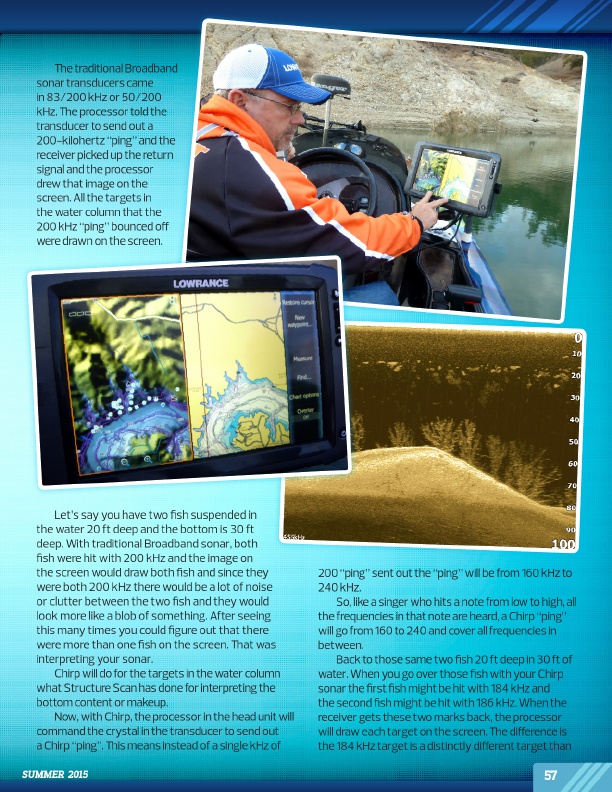
The traditional Broadband sonar transducers came in 83/200 kHz or 50/200 kHz. The processor told the transducer to send out a 200-kilohertz “ping” and the receiver picked up the return signal and the processor drew that image on the screen. All the targets in the water column that the 200 kHz “ping” bounced off were drawn on the screen.
Let’s say you have two fish suspended in the water 20 ft deep and the bottom is 30 ft deep. With traditional Broadband sonar, both fish were hit with 200 kHz and the image on the screen would draw both fish and since they were both 200 kHz there would be a lot of noise or clutter between the two fish and they would look more like a blob of something. After seeing this many times you could figure out that there were more than one fish on the screen. That was interpreting your sonar.
Chirp will do for the targets in the water column what Structure Scan has done for interpreting the bottom content or makeup.
Now, with Chirp, the processor in the head unit will command the crystal in the transducer to send out a Chirp “ping”. This means instead of a single kHz of
SUMMER 2015
200 “ping” sent out the “ping” will be from 160 kHz to 240 kHz.
So, like a singer who hits a note from low to high, all the frequencies in that note are heard, a Chirp “ping” will go from 160 to 240 and cover all frequencies in between.
Back to those same two fish 20 ft deep in 30 ft of water. When you go over those fish with your Chirp sonar the first fish might be hit with 184 kHz and the second fish might be hit with 186 kHz. When the receiver gets these two marks back, the processor will draw each target on the screen. The difference is the 184 kHz target is a distinctly different target than
57